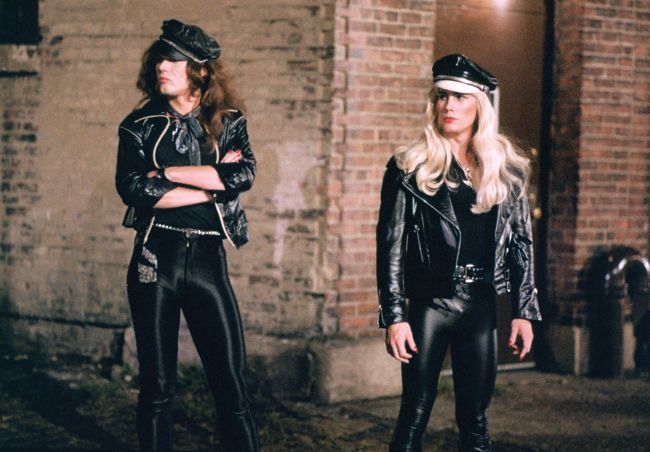CRUISING
MAKING A SCENE
Shocksploitation or important cultural document? The film Cruising, directed by William Friedkin and starring Al Pacino, was released more than 40 years ago, amid a storm of controversy. After all these years, it still has the power to unsettle and divide its audience
Words John Harris Dunning

TURNING TRICKS: Trans prostitutes DaVinci (Gene Davis, right) and her friend (Robert Pope)
Like the subject matter it’s covering, William Friedkin’s Cruising is a complex beast that eludes easy categorisation. Coming off the back of his critically acclaimed, box-office smash The Exorcist, Cruising was supposed to be Friedkin’s auteur vehicle, the first film he’d both written and directed.
The story follows undercover cop Officer Steve Burns as he travels through the murkily lit, hardcore gay leather scene in pursuit of a serial killer. Al Pacino played the lead, fresh from his success in The Godfather films, trumping Richard Gere, who’d also been up for the role. The plot was loosely based on Gerald Walker’s book, Cruising, named as a neat play on both gay cruising (for sex) and police cruising (for crime).
Walker’s book had initially been taken to Stephen Spielberg, who had just completed his horror film, The Duel. He passed on it, and directed Jaws instead. The setting of the film – the underground S&M nightclubs of New York City – wasn’t in the novel, and was entirely Friedkin’s idea. The director drew further inspiration from a series of articles in The Village Voice about a serial killer preying on gay men, and also talked extensively to former NYPD detective Randy Jurgensen, who’d worked undercover in the gay leather scene, and also appeared in the film.